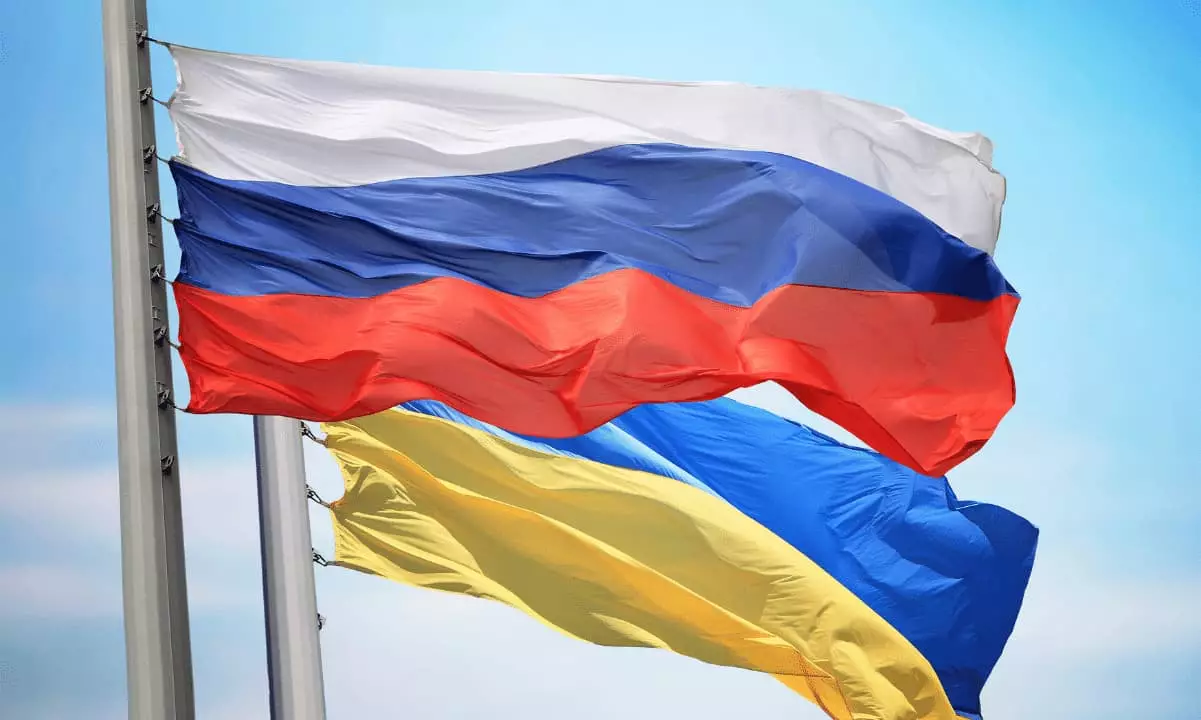Ukraine and Russia have climbed significant ranks in the global cryptocurrency economy, placing 6th and 7th respectively on the Global Crypto Adoption Index this year. According to a recent report by Chainalysis, these nations are not merely participants; they are emerging powerhouses within the sector, experiencing substantial growth in the face of geopolitical adversity and economic sanctions. This development raises important questions about the factors driving such remarkable adoption rates, especially during a time of conflict and political instability.
The ongoing war in Ukraine and the heightened sanctions against Russia have created a volatile environment in which traditional financial systems can no longer be relied upon. Blockchain technology and digital currencies are viewed as alternative financial avenues, enabling individuals and businesses to navigate the difficulties associated with inflation and restricted banking services. Chainalysis reports that Eastern Europe saw an influx of $182.44 billion in cryptocurrency into Russia, while Ukraine received approximately $106.1 billion. This indicates significant demand for cryptocurrencies as a means of preserving wealth and facilitating transactions in unstable economic climates.
Central to the rise of crypto in these nations is the proliferation of decentralized exchanges (DEXes). In a striking illustration of this trend, DEX platforms in Eastern Europe accounted for about $149 billion in crypto inflows, with Ukraine and Russia leading the charge. Ukraine’s DEX inflows skyrocketed by over 160% to reach $34.9 billion, while Russia’s saw even greater growth, rising by approximately 173% to $58.4 billion. This marks a significant shift toward decentralized financial operations, reflecting a growing sentiment against traditional banking structures that may be seen as unreliable or compromised by external pressures.
Another critical aspect of this cryptocurrency boom is the involvement of institutional investors. Ukraine has witnessed an astounding 361.49% increase in large institutional transactions—those exceeding $10 million. This trend indicates that significant players are turning to digital assets as a means of hedging against uncertainty. Conversely, smaller retail transactions in Ukraine showed remarkable growth as well, with increases of 82.29% for large and 91.99% for small transactions. This suggests a grassroots movement toward crypto adoption, as the population seeks to utilize digital currencies for regular purchases and everyday expenses.
Interestingly, the need for alternative trading platforms has also come to the forefront. While traffic to traditional centralized exchanges has stagnated in Russia, no-KYC exchanges—where users do not have to provide identifying information—have surged in popularity. This evolution can be attributed to increasing sanctions that limit access to conventional banking and financial services in the country. As locals turn to these platforms, it reflects a broader desire for autonomy and privacy in financial transactions during turbulent times.
The cryptocurrency markets in Ukraine and Russia represent a complex interplay of institutional interests and grassroots movements, driven largely by the need for stability amidst chaos. The remarkable increase in crypto inflows and the rising popularity of decentralized exchanges highlight a transformation occurring in these nations. As the geopolitical climate continues to evolve, the resilience of these countries in leveraging digital currencies underscores a significant shift within the global crypto landscape. The world watches closely as these regions navigate their futures with digital assets, shaping the direction of the cryptocurrency movement moving forward.
















Leave a Reply